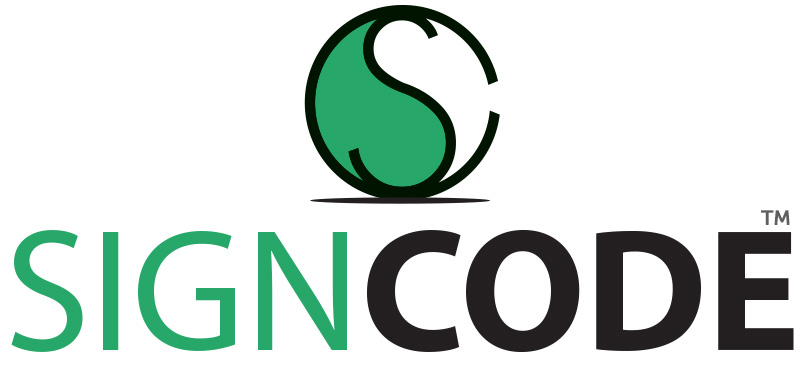SigncodeUK allows you to communicate your service messages to D/deaf customers in British Sign Language with subtitles. By scanning a QR code with their mobile device, customers have instant access to a video translation of important information about your product or service.
Even if you decide to put up written notices around your store or showroom, videos in BSL can still be a helpful addition to your service, as Deaf BSL users find signed information easier to understand as English is their second language.
BSL is a fascinating area to delve into. When you see our signcodes in action, you will be intrigued by the array of gestures and movements seemingly choreographed and will naturally want to find out more.
In previous articles, we’ve explained the reasons why you should adopt BSL into your training, interviews and sales process. Now let’s find out a bit more about the language itself.
This blog post explores some of the assumptions hearing people have surrounding BSL and explains why what you think is not necessarily the case.
Assumption 1: BSL is not a proper language like English, French or German.
BSL is in fact its own language just like French or any foreign language. It has grammar rules and vocabulary that is not a direct translation from any other language. It has developed from a system of signs and evolved to encompass a wide variety of other characteristics.
In 2003, BSL became officially recognised as a language in its own right and there are up to 145,000 users of BSL in the UK with around 70,000 using it as their first language.
Assumption 2: Okay, it’s a proper language that obeys grammar laws, but it’s really just simplified English, isn’t it?
BSL is not a translation of any language. It has come to be a language that has unique rules that don’t correlate with English word order. Sign Supported English is a translation of English using signs, but this is not the same as British Sign Language.
Assumption 3: There should be a common sign language that all deaf people can understand. It makes no sense to have different sign languages all over the world.
Believing that deaf people should all have the same language is tantamount to saying that everyone in the world should speak English. All languages are expressions of a culture and a way to label unique experiences of the world. Language is part of identity and that is why people fought to preserve the Welsh language.
The truth is, even if a ruling body decided to unify all sign languages, they would have an impossible job preventing any deviation. Regional variations and dialects are an inevitable part of language development. Just look at US English compared to UK English.
Different generations bring their own innovations too. Think about it, do you speak the same as your grandparents or even family members just a few years younger than you?
Assumption 4: British Sign Language, like English, is understood in English speaking countries such as the US, Australia and Ireland.
This is only partly true. BSL is different to Irish Sign Language (ISL) and American Sign Language (ASL). These two are actually closer to French Sign Language (LSF).
The good news is that BSL, Australian Sign Language (Auslan) and New Zealand Sign Language (NZSL) are in the same family of sign languages, so sign language users from these countries understand each other pretty well.
Assumption 5: Sign language is a recent phenomenon
Records show that some form of sign language was being used as early as the 16th century, and that’s only what’s been documented. The 1760s introduced the first academy for deaf people, so formal tuition of sign language began back then.
Check back for more BSL myths, facts and assumptions in future articles. In the meantime, if you are interested in how we can help your business cater for deaf and hard of hearing people using signcodes, please get in touch with our friendly team.

